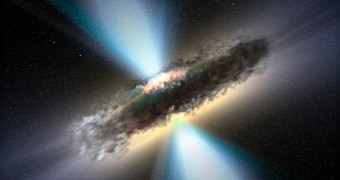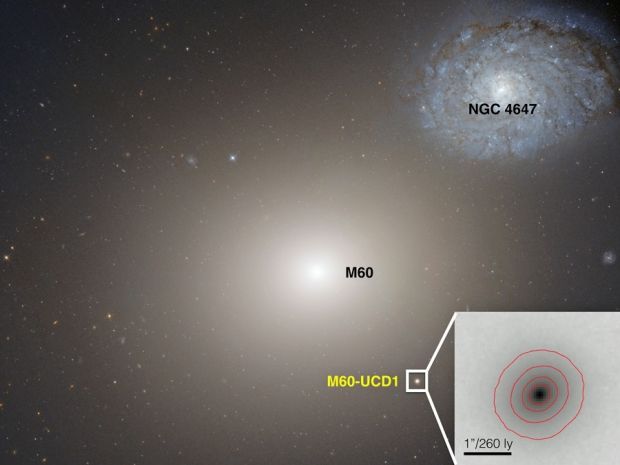A paper published in yesterday's issue of the journal Nature announces the discovery of a supermassive black hole at the center of a rather teeny tiny galaxy.
The galaxy in question is known to the scientific community as M60-UCD1 and sits at a distance of about 54 million light-years from our planet.
According to astronomer Anil Seth with the University of Utah in Salt Lake City, US, M60-UCD1 is the smallest galaxy to have until now been documented to play host to a downright monstrous black hole.
Crash course in the dwarf galaxy's anatomy
Scientist Anil Seth and fellow researchers explain that what first sparked their interest in the dwarf galaxy was the fact that X-ray emissions originating from it indicated that it played host to a black hole.
More precisely, the astronomers explain that, having analyzed data obtained with the help of the Hubble Space Telescope, they found that M60-UCD1's core packed an unusually high concentration of mass.
However, it was only after peering into the dwarf galaxy's entrails with the help of the infrared spectrometer on the Gemini North telescope atop Mauna Kea in Hawaii that they found that M60-UCD1 accommodated for a black hole that packed the mass equivalent of 21 million Suns.
To help keep things in perspective, it need be said that the black hole at the center of this dwarf galaxy is about five times heavier than the one at the core of our home galaxy, the Milky Way. By comparison, M60-UCD1 measures about one-six-hundredth of the Milky Way's diameter across.
What's more, M60-UCD1's black hole tips the scale at about 15% of the mass of the dwarf galaxy's stars. Most supermassive black holes, in the other hand, hold about 0.5% of the mass of the stars that their home galaxies have packed in their center.
“It is the smallest and lightest object that we know of that has a supermassive black hole” says Anil Seth commented on these findings in a recent interview with the press. "It’s also one of the most black hole-dominated galaxies known,” the astronomer added.
How a dwarf galaxy ends up harboring such a black hole
Scientists have yet to find bullet-proof evidence to confirm this theory, but they suspect that the only reason M60-UCD1 currently harbors a black hole of this impressive size is that this dwarf galaxy was not always this small.
Specifically, it is believed that M60-UCD1 was once much bigger than it currently is, and that it lost most of its stars after brushing by other galaxies. If this is true, this could mean that other dwarf galaxies scattered all across the universe might also pack supermassive black holes as their center.
“We believe this once was a very big galaxy with maybe 10 billion stars in it, but then it passed very close to the center of an even larger galaxy, and in that process all the stars and dark matter in the outer part of the galaxy got torn away,” explained Anil Seth.
The galaxy that astronomers suspect reshaped M60-UCD1 after coming very close to it is dubbed M60. It sits at a distance of about 22,000 light-years from M60-UCD1, and it harbors a supermassive black hole that tips the scale at about 4.5 billion solar masses.
Evidence indicates that this much larger galaxy is now pulling M60-UCD1 closer to it and that the two might one day come together. As Anil Seth put it, “Eventually, this thing may merge with the center of M60. When that happens, the black hole we found in M60-UCD1 will merge with that monster black hole.”

 14 DAY TRIAL //
14 DAY TRIAL // 

